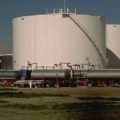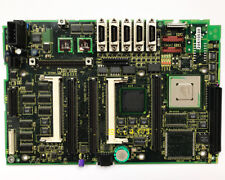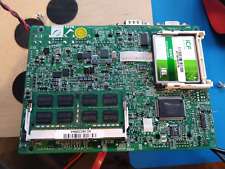
Since the late 1970s, the amount of solar radiation the sun emits, during times of quiet sunspot activity, has increased by nearly .05 percent per decade, according to a NASA funded study.
“This trend is important because, if sustained over many decades, it could cause significant climate change,” said Richard Willson, a researcher affiliated with NASA’s Goddard Institute for Space Studies and Columbia University’s Earth Institute, New York. He is the lead author of the study recently published in Geophysical Research Letters.
“Historical records of solar activity indicate that solar radiation has been increasing since the late 19th century. If a trend, comparable to the one found in this study, persisted throughout the 20th century, it would have provided a significant component of the global warming the Intergovernmental Panel on Climate Change reports to have occurred over the past 100 years,” he said.
The solar cycle occurs approximately every 11 years when the sun undergoes a period of increased magnetic and sunspot activity called the “solar maximum,” followed by a quiet period called the “solar minimum.”
Although the inferred increase of solar irradiance in 24 years, about 0.1 percent, is not enough to cause notable climate change, the trend would be important if maintained for a century or more. Satellite observations of total solar irradiance have obtained a long enough record (over 24 years) to begin looking for this effect.
Total Solar Irradiance (TSI) is the radiant energy received by the Earth from the sun, over all wavelengths, outside the atmosphere. TSI interaction with the Earth’s atmosphere, oceans and landmasses is the biggest factor determining our climate. To put it into perspective, decreases in TSI of 0.2 percent occur during the weeklong passage of large sunspot groups across our side of the sun. These changes are relatively insignificant compared to the sun’s total output of energy, yet equivalent to all the energy that mankind uses in a year. According to Willson, small variations, like the one found in this study, if sustained over many decades, could have significant climate effects.
In order to investigate the possibility of a solar trend, Willson needed to put together a long-term dataset of the sun’s total output. Six overlapping satellite experiments have monitored TSI since late 1978. The first record came from the National Oceanic and Atmospheric Administration’s (NOAA) Nimbus7 Earth Radiation Budget (ERB) experiment (1978 – 1993). Other records came from NASA’s Active Cavity Radiometer Irradiance Monitors: ACRIM1 on the Solar Maximum Mission (1980 – 1989), ACRIM2 on the Upper Atmosphere Research Satellite (1991 – 2001) and ACRIM3 on the ACRIMSAT satellite (2000 to present). Also, NASA launched its own Earth Radiation Budget Experiment on its Earth Radiation Budget Satellite (ERBS) in 1984. The European Space Agency’s (ESA) SOHO/VIRGO experiment also provided an independent data set (1996 to 1998).
In this study, Willson, who is also Principal Investigator of NASA’s ACRIM experiments, compiled a TSI record of over 24 years by carefully piecing together the overlapping records. In order to construct a long-term dataset, he needed to bridge a two-year gap (1989 to 1991) between ACRIM1 and ACRIM2. Both the Nimbus7/ERB and ERBS measurements overlapped the ACRIM ‘gap.’ Using Nimbus7/ERB results produced a 0.05 percent per decade upward trend between solar minima, while ERBS results produced no trend. Until this study, the cause of this difference, and hence the validity of the TSI trend, was uncertain. Willson has identified specific errors in the ERBS data responsible for the difference. The accurate long-term dataset, therefore, shows a significant positive trend (.05 percent per decade) in TSI between the solar minima of solar cycles 21 to 23 (1978 to present). This major finding may help climatologists to distinguish between solar and man-made influences on climate.
NASA’s ACRIMSAT/ACRIM3 experiment began in 2000 and will extend the long-term solar observations into the future for at least a five-year minimum mission.


















Comments are closed.